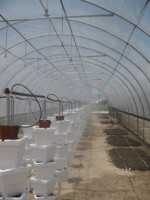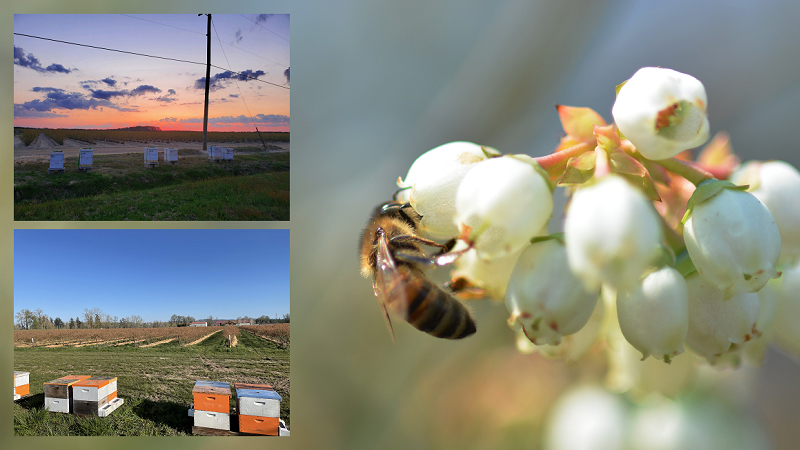Helping Hand For Haiti Involves High Tunnels


The earthquake that devastated Haiti last year brought more troubles for a land that has long suffered from issues related to systemic poor governance, regular upheavals, and coup d’états. Farming, for example, has faced major problems long before the quake hit, making successful commercial agriculture in the country virtually non-existent.
With its location and various climates at different elevations, Haiti has the potential to grow many different crops and become a more self-sustaining country. USAID is funding the Watershed Initiative For National Natural Environmental Resources (WINNER) project, which is focused on sustainable agricultural development in Haiti. Chemonics International is managing the project and has subcontracted UF/IFAS to help resurrect agriculture there.
Unintended Results
Years ago there was a commercial agricultural sector in Haiti. But, when the U.S. and other countries began shipping in humanitarian food aid beginning in the 1960s, it killed the ag economy.
“When the free food aid started coming in, it destroyed agriculture,” says Brian Boman, Florida BMP coordinator for UF/IFAS and WINNER project team member. “Local farmers couldn’t compete with free. All of those farmers had no jobs, so they moved to the cities like Port-au-Prince and a whole other set of urban problems rose out of that migration.
“Haiti has lost a couple of generations of farmers and the knowledge of how to grow. We are here to reintroduce modern ag practices, so people can learn how to produce their own food in a sustainable way and have viable commercial agriculture.”
Leading By Example
Boman has made nine trips to Haiti in the past year and is helping local growers source water and learn to grow in hoop houses. He’s working with WINNER project managers to develop several demonstration projects to show viable methods of production. He says it’s like Florida’s Research and Educations Centers, but on a much smaller and more basic scale.
What Is The WINNER Project?
The WINNER project is a five-year multifaceted program designed to comprehensively build Haiti’s agricultural infrastructure, capacity, and productivity by providing concentrated and transformative support to Haitians in a large area north of Port-au-Prince. It is focused on building and strengthening Haiti’s agricultural foundation, particularly in the areas of Cul-de-Sac, Cabaret, Mirbalais, Archaie, and Gonaives. It is backed by $126 million in funding from the U.S. government over the next five years.
“A big part of this project is rehabilitation of infrastructure,” he says. “In one area, we’re working to divert the water coming out of the mountains to local communities. There are dams for this, but they are no longer in operation because of years of neglect.”
Boman says much of the day is dedicated to getting water for many people in the small villages he has visited. “Every day, your main job is to get water,” he says. “You look at their lives spent mostly taking care of very basic needs like water and food. That is a heck of a way to live, so we will provide the village with water from the spring. Then, the local women won’t have to go and haul the water back to the village.”
In addition to water resources and improving irrigation methods, Boman is helping growers learn about production in hoop houses. The have put in hoop house demonstrations in the villages of Bas Boen, Kenscoff, and near Furcy where 11 hoop houses will be installed on the side of the mountain.
“In order to get water to the hoop houses in Furcy, I will be putting in a system to capture water from a spring and pump it up the mountain to a cistern at the school,” says Boman. “In addition to water for the hoop houses, this will provide water for the school and the village.”
Growers will form an association around the 11 hoop houses and sell the crops from the houses like a cooperative. The goal is for each grower to make enough money from individual shares, so they can duplicate the hoop house technology on their own farms.
Another project Boman is excited about is a tomato farm and processing facility. The grower had been put out of business in 1995 when whiteflies came to the island and there were no pesticides available to protect the crop.
“We are working on putting in about 225 acres of drip irrigation to grow tomatoes on,” he says. “This will feed the processing plant, which makes ketchup. Currently, the facility imports tomato paste from wherever they can get it. Between the farm and processing facility, it is expected to create 6,000 jobs. This will be a huge benefit to the people. It is exciting to be part of a project like this one.”










